The dinosaur that went to space: the state fossil of New Mexico
Who knew that New Mexico has one of the world’s most famous dinosaur species? I sure didn’t until our recent visit to Ghost Ranch, located about an hour north of Santa Fe (see my last post about Georgia O’Keefe and her life in that region: https://landscapes-revealed.net/the-rocks-of-georgia-okeefe/). It turns out that a Ghost Ranch quarry has yielded hundreds of Coelophysis dinosaur skeletons. This dinosaur was first discovered near Abiquiú in 1881, but in 1949 a field team from the American Museum of Natural History in New York went to Ghost Ranch and found such a vast number of skeletons that Coelophysis was eventually selected as New Mexico’s state fossil in 1981.
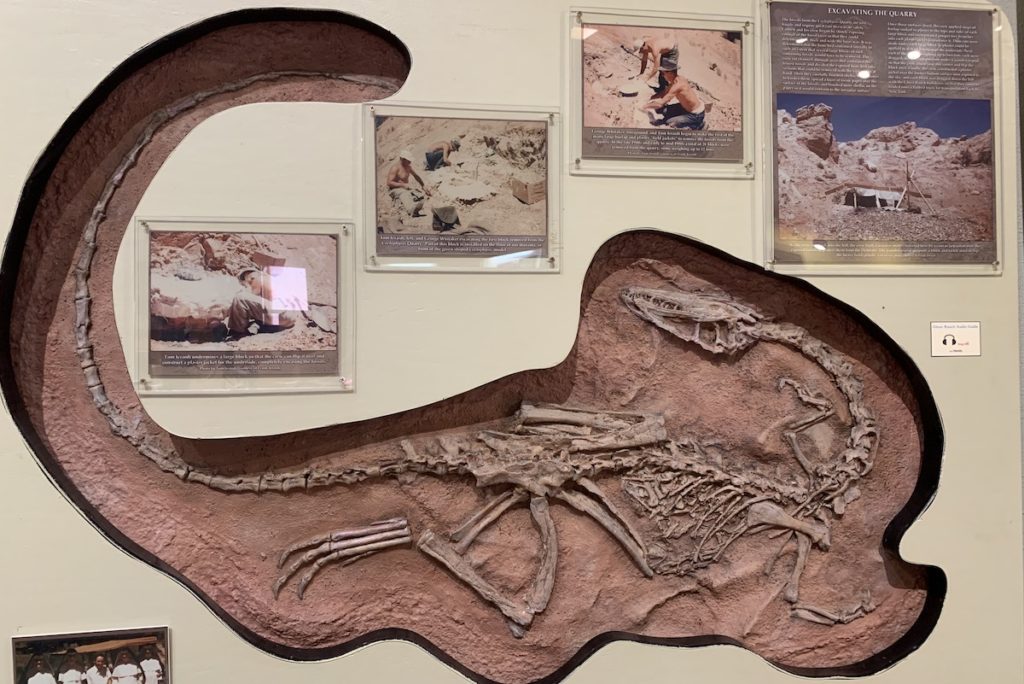
What’s so special about this dinosaur species?
The Coelophysis dinosaur bones are in the Late Triassic Chinle Formation (see my last post for information about the three periods of the Mesozoic Era (https://landscapes-revealed.net/the-rocks-of-georgia-okeefe/). The Late Triassic Period is known as the beginning of the “Age of Dinosaurs”, and Coelophysis (lived from ~225–190 million years ago) is among the earliest discovered meat-eating dinosaurs. Ghost Ranch claims to have excavated more skeletons of Triassic dinosaurs than anywhere else in the world.
[In 2017, we traveled to Northern Argentina, another place where some of the earliest dinosaur fossils have been found. To learn more about those sites, go to https://landscapes-revealed.net/argentina-a-paradise-for-fossils-of-dinosaurs-and-proto-mammals/.]
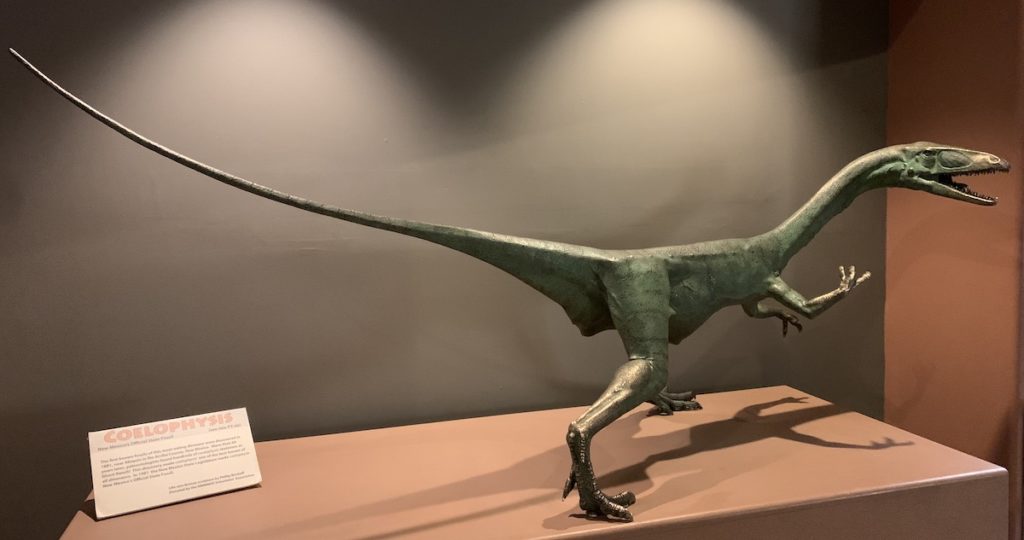
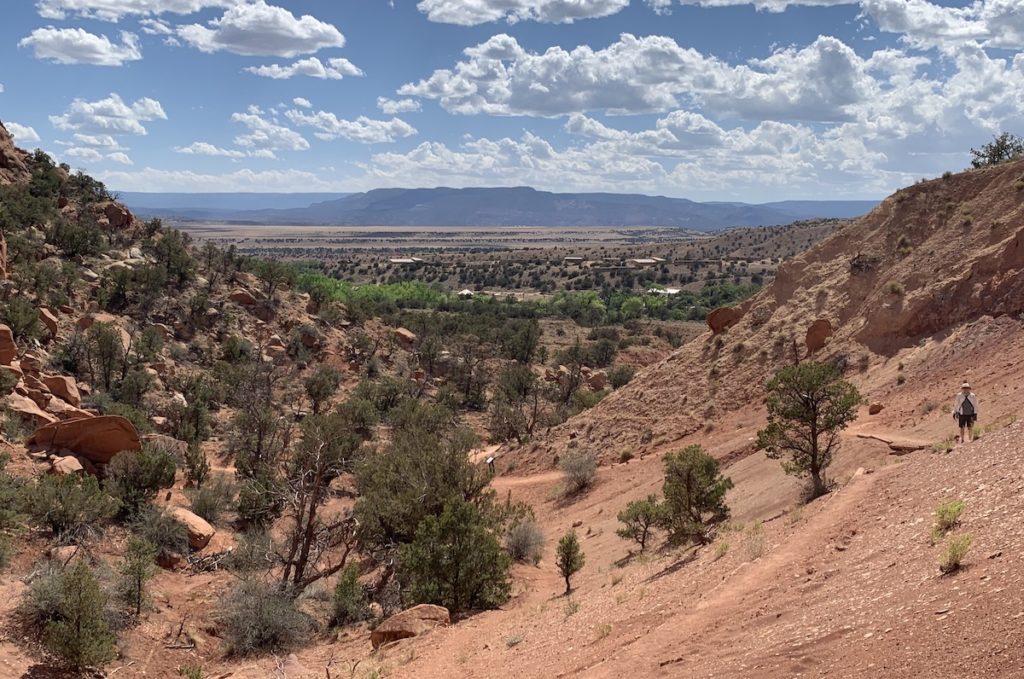
Why were these dinosaurs fossilized?
Because of factors such as oxidation and predators, only a small fraction of living organisms become part of the fossil record. So how did hundreds of Coelophysis dinosaurs get preserved? The sediments of the Chinle Formation are mud, sand and gravel deposited in a river system. Because the climate at that time and location was dry, water and food were probably scarce. Experts contend that the dinosaurs had probably gone to a place where there was water, but not enough for large groups. The relative scarcity of water and food may have caused them to die of thirst or starvation. Those corpses would have attracted more meat-eating dinosaurs. Because the skeletons were piled up together, it’s thought that a flash flood gathered the corpses together. Then, more flooding washed mud over the corpses, burying them so that they could be preserved as fossils. It’s a sad tale, but helpful to paleontologists who study the evolution of life on Earth.
During the Cenozoic Era (<66 million years ago), the Colorado Plateau was uplifted, causing rivers to cut down into the landscape and overlying rocks to be eroded away. These processes eventually brought the Triassic rocks to the surface and the fossil-bearing sedimentary layers to our view.
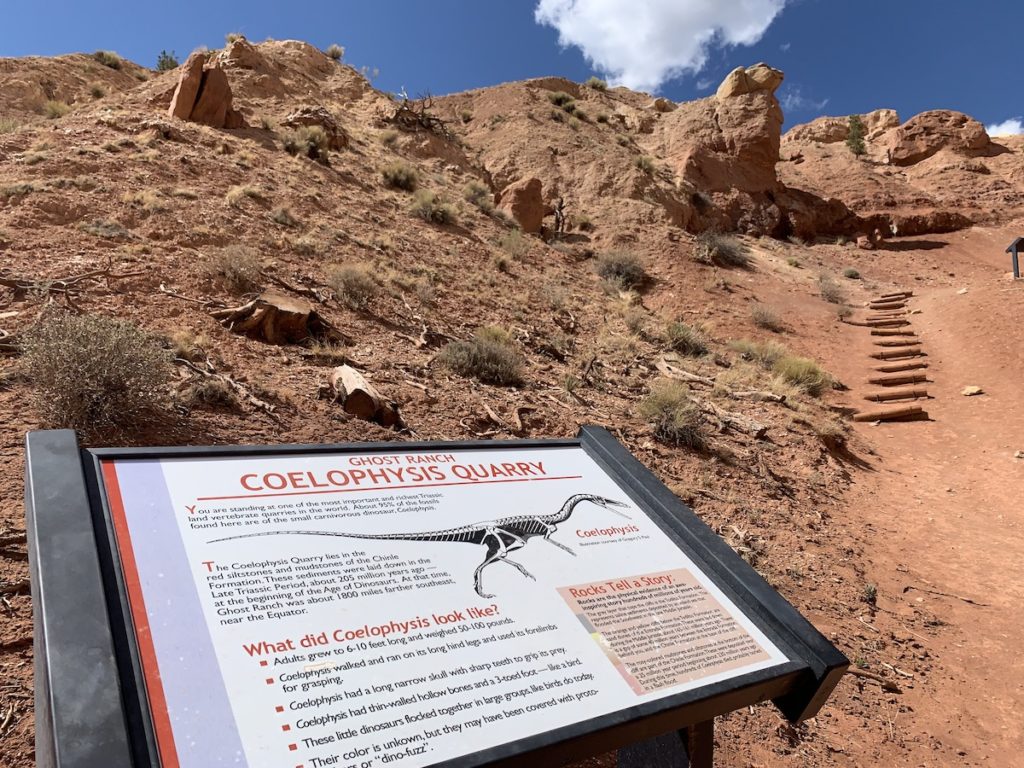
But how did this dinosaur go to space?
Dinosaurs and space are both popular aspects of science. So why not combine these two elements into an effective science outreach tool! The first dinosaur to venture into space was the 76-million-year-old hadrosaur Maiasaura, which is called the “good mother lizard” because it cared for its young in large nesting colonies. Bits of bone and eggshell found at a nesting site were carried by an astronaut to SpaceLab2 in 1985. As a result of its fame, Maiasaura was in 1985 made Montana’s state dinosaur.
Coelophysis was the second dinosaur to be transported to space. Already famed as the state fossil of New Mexico, NASA’s Endeavor Space Shuttle borrowed a skull from the Carnegie Museum of Natural History—quarried at Ghost Ranch, of course—and carried it to the Mir space station. It left Earth on 22 January 1989 and returned shortly thereafter on 31 January.
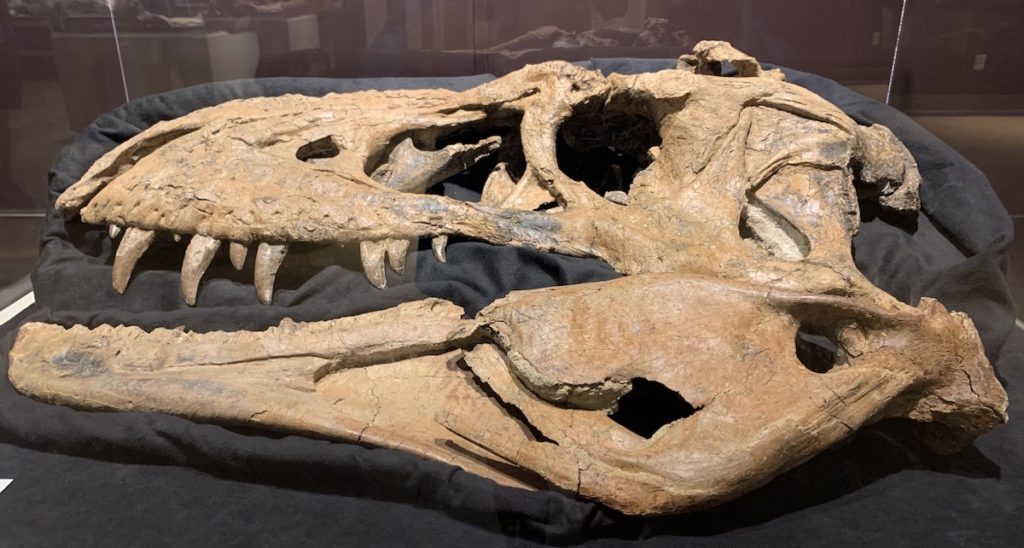
The Bisti Beast is a tyrannosaur that lived about 75 million years ago, 2 million years before its larger and more notorious relative, Tyrannosaurus rex. By this time, dinosaurs were the top predators and kings of the planet. In contrast to its diminutive ancestor Coelophysis, the Besti Beast was about 9 meters (30 feet) long and weighed about 3 tons!
Resources
Ruth Hall Museum of Paleontology at Ghost Ranch: https://www.ghostranch.org/activities/the-ruth-hall-museum-of-paleontology/. The museum was named after Ruth Hall, an amateur paleontologist and another intrepid 20th century woman in the northern New Mexico region.
The New Mexico Museum of Natural History & Science: https://www.nmnaturalhistory.org/.


Absolutely fascinating! And combined with the art and history of Ghost Ranch. That place is on my list. You guys have such interesting trips!
Thanks Mark! We were in New Mexico thanks to friends getting married in Santa Fe. We sure enjoyed the region.